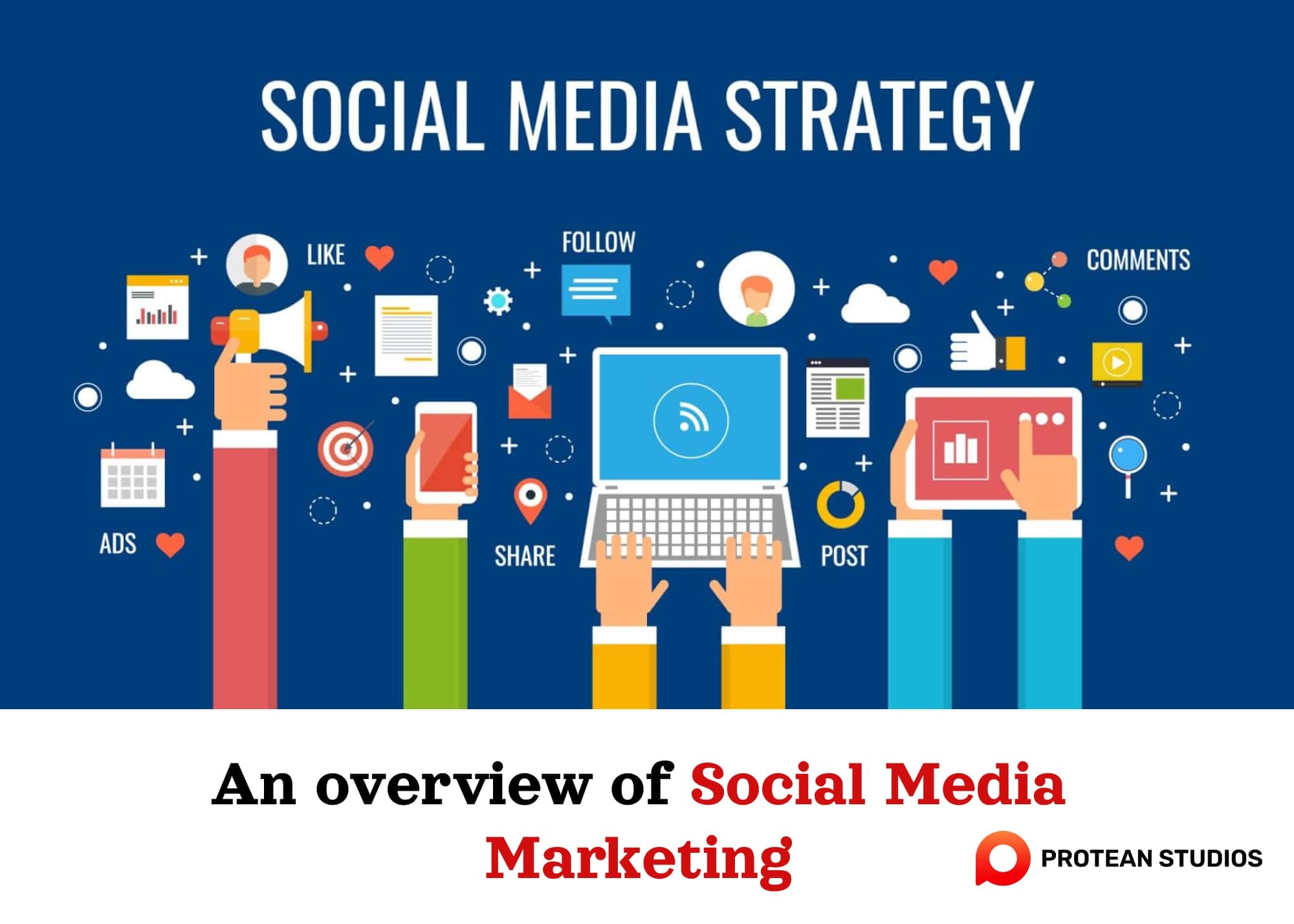Social media marketing is a powerful way to reach and engage a business’s target audience, build brand awareness, and drive traffic to their website.
But how do you create a social media marketing strategy that works in 2024? In this article, we will guide you on how to build a social marketing strategy that helps enhance your business performance.
An overview of social media marketing
Social media is a massive community with over 4.3 billion users who love sharing, discovering, and creating content. It's a crucial part of business growth strategies, especially when it comes to building meaningful relationships with customers. The impact of "social" is undeniable.

Social media marketing (SMM) is a digital marketing strategy that utilizes social media platforms to connect with and engage target audiences. The goal is to promote services, products, or brands. It involves creating and sharing content on social media networks, such as Facebook, LinkedIn, Instagram, Twitter, etc.
Advantages of engaging in the SMM
There are many advantages to engaging in social media marketing, making it a powerful tool for businesses of all sizes in 2024.
1. Establishing and fostering brand and interaction
Direct communication: Connect with your target audience, build relationships, and foster brand loyalty.
Humanize the brand: Share your brand story, values, and behind-the-scenes glimpses to create a more personal connection.
Community building: Create a community around the brand by encouraging conversations, running contests, and collaborating with influencers.
2. Increase brand awareness
Massive audience: Social media platforms have billions of users, allowing businesses to reach a wider audience than traditional marketing channels.
Targeted advertising: Platforms like Facebook, TikTok, and Instagram offer sophisticated targeting options to ensure a message reaches the right people.
Organic reach: Share engaging content to boost your reach, reaching a much larger audience beyond your followers.

Learn more: Advertising Technology (AdTech): Definition, Ecosystem, And Programmatic
3. Enhanced sales, and traffic
Drive traffic to the website: This strategy will use social media to link to the website, landing pages, and product pages.
Generate leads: capture email addresses, contact information, and other valuable data through targeted campaigns and promotions.
Direct sales: Some platforms like Instagram, LinkedIn, and TikTok allow for direct product sales through integrated shopping features.
How to create a social media marketing plan
Building a successful social media marketing plan requires a focus on authenticity, engagement, and data-driven insights. Below are the detailed steps that you can follow to create a good marketing strategy for a business.
1. Set goals
Before starting to post on social media, you need to have a clear idea of what you want to achieve.
What are your goals, and how do you plan to gauge their achievement?
Are you aiming to boost traffic, sales, leads, or awareness?
How do you intend to synchronize your social media objectives with your broader business goals?
Setting these goals enables you to clarify your objectives, guiding your allocation of time and effort.
2. Research your target viewer
To create effective content, you need to know who you are tending to. Who is your ideal customer, and what are their pain points, needs, interests, and preferences? How do people use social media, and what kind of stuff do they like to see? Thus, people can use tools like surveys, interviews, analytics, and personas to gain insights into your target audience.
3. Choose the right social media applications
Not all social media platforms are fit for your business. Depending on your goals, audience, and industry, some channels may be more optimized for your business than others. You need to choose the platforms where your audience is most active and where you can showcase your products or services best. For example, if you are a B2B company, LinkedIn may be a better option than TikTok.
Besides, you can choose more other social platforms via the article: What is Social Media Marketing?
4. Determine the crucial metrics and KPIs
To measure the success of your social media marketing plan, you need to track the right metrics and key performance indicators (KPIs). These are the numbers that show how well you are achieving your goals and how your content is performing. Some common metrics and KPIs that you can use are reach, impressions, engagement, clicks, conversions, and ROI.
5. Craft compelling content
Content is the heart of social media marketing, and it is very important. Generate content that captivates, educates, entertains, and motivates your audience. The content should also reflect the brand's voice and values and match the tone and style of each platform. You can also use different types of content, such as images, videos, stories, live streams, podcasts, blogs, infographics, etc.

6. Make a content post schedule
To maintain consistency and quality in your social media marketing plan, you need to have a schedule for content creation. This means planning ahead for what content you will create, when you will publish it, and on which platforms. You can use tools like calendars, spreadsheets, or apps to organize your content schedule.
7. Analyze competitors
To stay ahead of the curve and learn from others in your industry, you need to perform an analysis of competitors. This means identifying who your main competitors are on social media, what they are doing well and poorly, what their strengths and weaknesses are, and how you can differentiate yourself from them.
8. Control and evaluate the marketing strategy
Finally, you need to assess and enhance the social media marketing plan regularly. This means reviewing your metrics and KPIs and evaluating what worked and what didn't work. Then, identify areas for improvement or optimization and make adjustments as needed. Besides, we can use tools like feedback forms or polls to get input from your audiences.
Summarize the SMM strategy
A successful social media marketing strategy involves setting clear goals, understanding the target audience, selecting appropriate platforms, identifying key metrics, creating engaging content, etc. This systematic approach helps businesses build a strong online presence, connect with their audience, and achieve measurable results in the dynamic landscape of social media.




